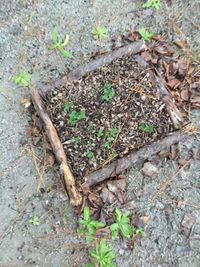Economy of Kalkon
| Economy of Calcont | |
|---|---|
 The Flag of Kalkon | |
| Currency | United States Dollar ($) |
| Statistics | |
| GDP | Yet to be calculated |
| GDP growth | N/A |
| GDP by sector | Approx. figured Agriculture: 100% Services: 0% Manufacturing: 0% |
| Inflation | 0% |
| Population below poverty line | 0% |
| Gini coefficient | 22.0 (estimate) |
| Unemployment | Negative |
| Main industries | Agriculture, woodworking, forestry |
| External | |
| Exports | $50.28 |
| Export goods | Peppers, Charleston gray watermelons, strawberries, blackberries, peas, kale, lettuce, potatoes, tomatoes, seeds, okab(egg bread), firewood, general wood products |
| Main export partners | United States |
| Imports | unknown |
| Import goods | Fuel, food & drink, clothing |
| Main import partners | United States |
| FDI stock | $0 |
| Current account | $3,000 approximately |
| Gross external debt | $0 |
| NIPP | $0 |
| Public finances | |
| Public debt | $0 |
| Budget deficit | ($95,000-100,000 for Greater Calcon) |
| Foreign reserves | local bank |
| All values, unless otherwise stated, are in USD | |
The Economy of the Kingdom of Calcon is a mixed market model based largely on its agricultural sector and the import/export.
Agriculture
A major part of the Calconian economy is based on agriculture. King Caleb the 1st wants to start growing winter wheat, corn, tomatoes, and barley. Also, he gathers wood by chopping down trees and makes some into firewood. On May 12–13, King Caleb decided to start the Agricultural Revolution with mints, iceberg lettuce, spinach, and arugula. Spinach per serving, about 79 calories, has 9.7 grams of protein. He gained $0.28 of his first ounce of mint also. Later in the year, maybe around October, there might be the start of winter wheat as well. This is due to the fact that the Kalkoni(Calconian) monarch does not like temperatures above 80 degrees F(around 26 2/23 degrees C).
Now, there can be goat milk, winter wheat, and spinach. These three things do better in cooler weather, which makes it to train to eventually go up to Maine and whatnot. King Caleb started to plant corn in Sappato on the Summer Solstice. There are 10-15 plants that have been put down. As of October 20, there were extensive plans to have Priestly-styled greenhouses, bamboo, apples, walnuts, and even summer-grown sugarcane. Priestly did an experiment with a candle and a plant, with the result of the plant giving off oxygen and the candle using it. the candle would alos provide warmth for more lower temp-tolerant crops like kale, carrots, spinach, etc.
A New Revival
Starting in April to June, the Monarch planted corn, pumpkins and green beans in his designated garden, where the soil is mixed with sand and the natural clay. However, all of the plants except the pumpkins, which thrived and grew. In South Carolina(Sappato), it was again with the green beans as well as watermelons. This time, they did thrive with the looser sandy soil, and more of watering them too. He placed mulch to keep the plants cool and to store the water because of the extremely loose draining soil. However, it is debated wherever that the plants would survive, because they were later abandoned. In the land of the Southern Woods, on October 20th of 2019, the King planted a new crop of green beans in compost, declared it be part of Sappato, and it was complete. They grew up to be extremely tall in the first week of its existence. He has also planted a new crop of spinach in a plastic, see-through pot. The King's potato plant had failed and turned black of its death, with unknown reasons why.
